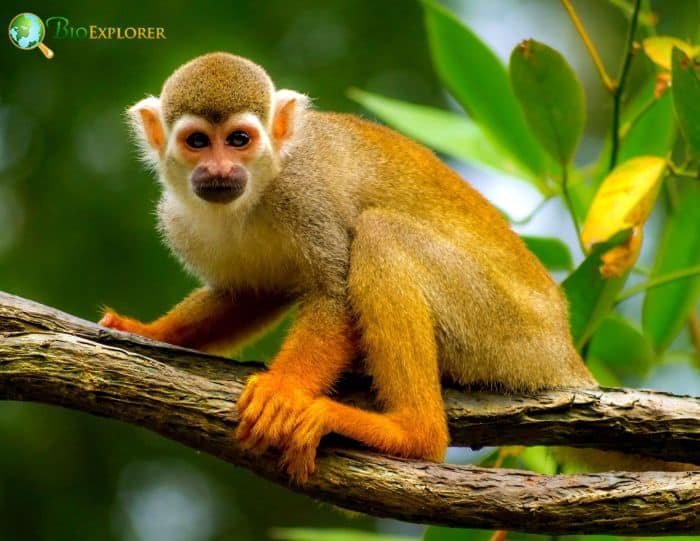Humboldt’s Squirrel Monkey

| Kingdom | Order | Family | Genus | Species |
|---|---|---|---|---|
| Animalia | Primates | Cebidae | Saimiri | Saimiri cassiquiarensis |


- Common Name: Humboldt’s Squirrel Monkey
- Taxonomy Classification Year: 1840
- Monkey Size: 25 to 37 cm (9.8 to 14.6 in)
- Skin Color(s): Grayish
- Habitat: Forest, rainforest
- Diet: Omnivorous
- Native Countries: Brazil, Colombia, Ecuador, Peru, Venezuela
Humboldt’s Squirrel Monkey Distribution
Humboldt’s Squirrel Monkey Characteristics

Humboldt’s squirrel monkey[1] (Saimiri cassiquiarensis) is a species of squirrel monkey found in South America’s Tropical Rainforests, except for the coastal forests of southeastern Brazil.
- Humboldt’s squirrel monkeys are up to 12.5 inches long (body length), with a tail of about 16 inches.
- These New-World Monkeys have a slender, supple build with short grayish fur and bright yellow legs. Their non-prehensile tail often curls over one shoulder when resting.
- Their coloration is similar to that of the Guianan squirrel monkey, but the fur at the base of the Crown is golden yellow compared to the gray of the Guianan squirrel monkey.
- These squirrel monkeys have fingernails instead of claws and are known as “little nervous primates“.

Humboldt’s Squirrel Monkey Facts

- Groups of Humboldt’s squirrel monkeys can number up to 300 individuals. In the non-mating period, subgroups form within the leading group, for example, based on sex, age, or family roles.
- These monkeys are very agile; they sometimes run throughout the forest on the branches.
- Humboldt’s squirrel monkeys exhibit female dominance, with female species forming the central core of the troop or group.
- Some temporary relationships between a childless mother and another woman’s child may form. These older females become “aunts“.
- Humboldt’s squirrel monkeys are diurnal, and their activities usually center around a water source.
Suggested Reading: Monkey Varieties
Cite this page
Bio Explorer. (2025, December 31). Humboldt’s Squirrel Monkey. https://www.bioexplorer.net/animals/mammals/monkeys/humboldts-squirrel-monkey/
